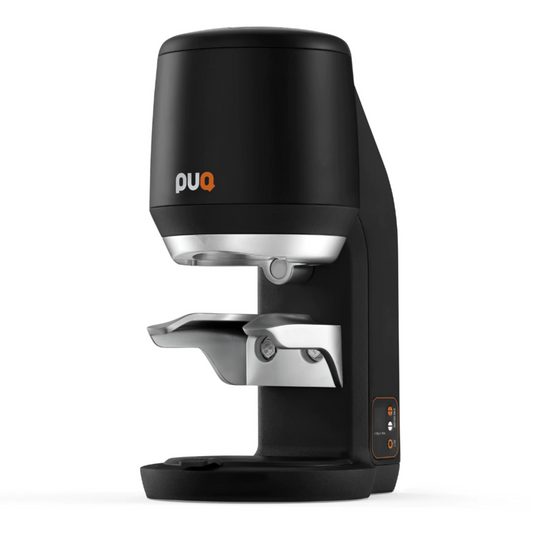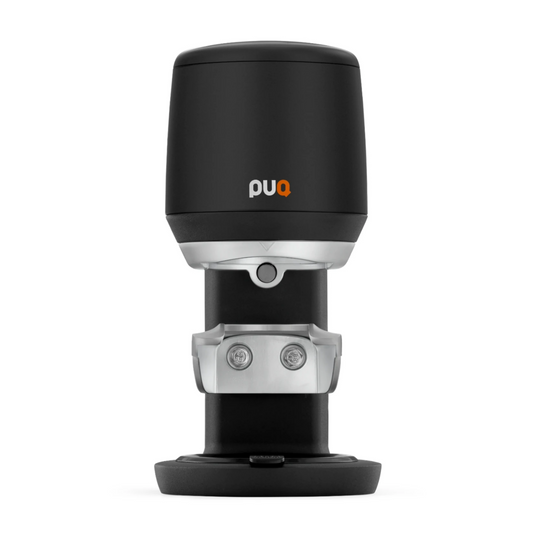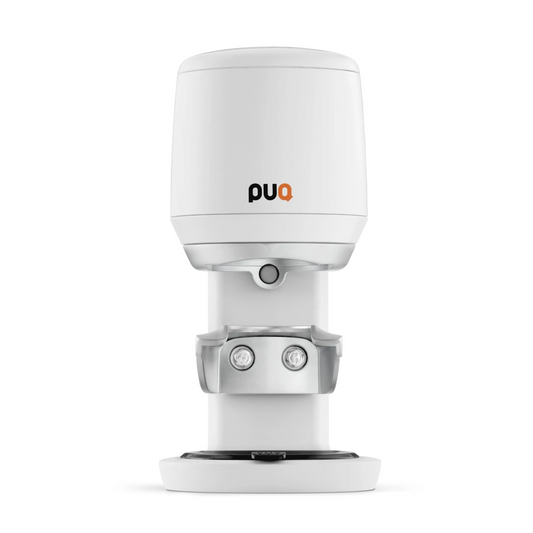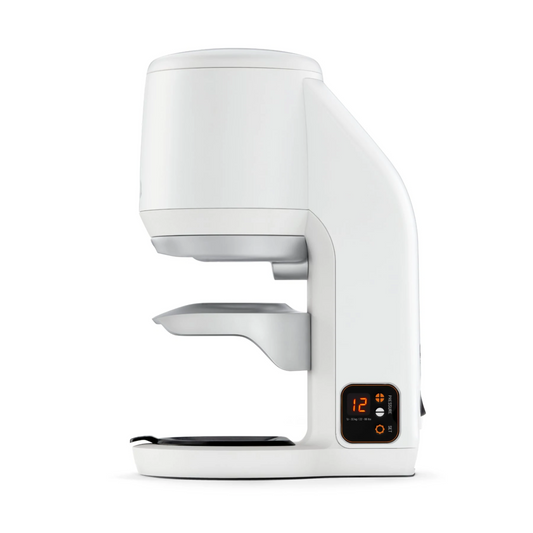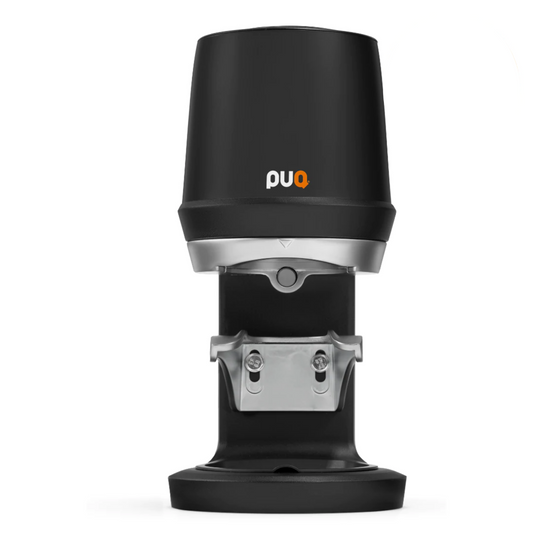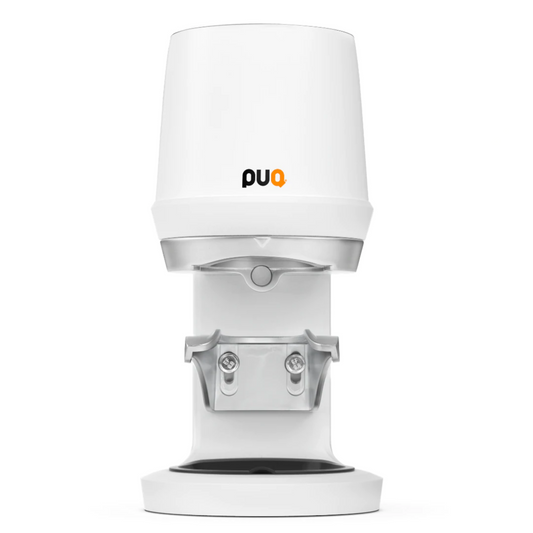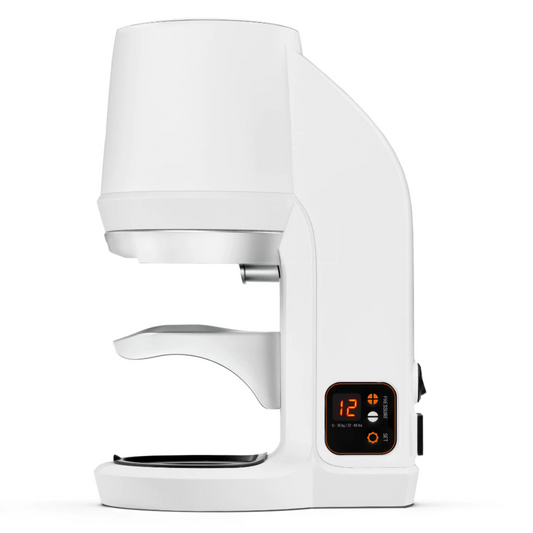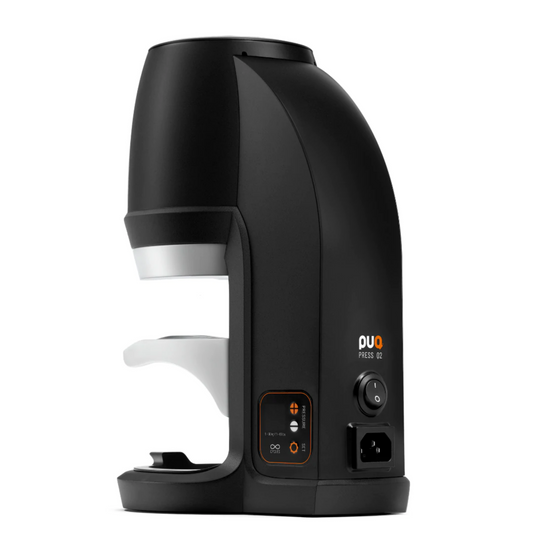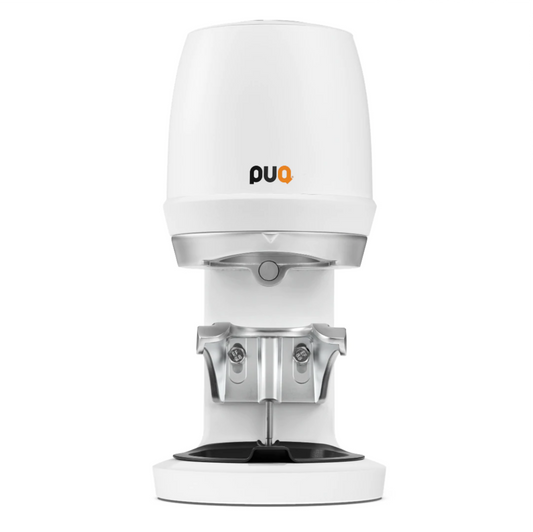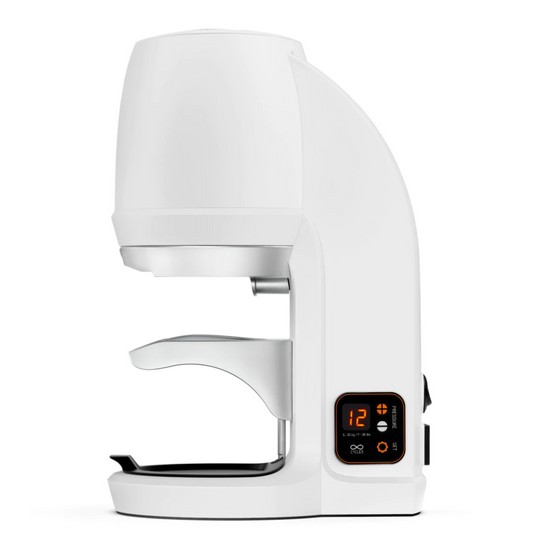👇Using the filter options below or search function above☝️may help narrowing down what you might be looking for☕
👇Using the filter options below or search function above☝️may help narrowing down what you might be looking for☕
-
Puqpress Mini 58mm Matt Black
Regular price R 15,850.00Regular priceUnit price / per -
Puqpress Mini 58mm Matt White
Regular price R 15,850.00Regular priceUnit price / per -
Puqpress Automatic Coffee Tamper Matt Blk - Q1
Regular price R 20,850.00Regular priceUnit price / per -
Puqpress Automatic Coffee Tamper White - Q1
Regular price R 20,850.00Regular priceUnit price / per -
Puqpress Q2 58mm Automatic Coffee Tamper - Matt Black
Regular price R 25,650.00Regular priceUnit price / per -
Puqpress Q2 58mm Automatic Coffee Tamper - White
Regular price R 25,650.00Regular priceUnit price / per
📽️Also check out the videos menu for some helpful clips on the basics.
☕Need more information?🤷♂️
Bean to Cup Machine “cups-per-day” explained
It is easy to shop based on price alone, although you also need to consider what the machine will be used for and what volume you’d need your machine to cope with on an average day. It is for this reason that Bean to Cup machines is rated for average cups per day usage; an important factor to consider in the buying decision process.
Bean-to-cup coffee machines have a "cups per day" rating to indicate the recommended maximum usage level for optimal performance and durability. This rating helps users understand the machine's intended capacity and ensures that it can consistently deliver high-quality coffee over an extended period. It’s not to say that when the machine reaches its rated cups per day rating that the machine will stop working, this is rated on average cups per day that the machine will be required to cope with – some day’s it may be less & other days it may be more – on average the machine should not be run continuously in excess of its limits.
Here are a few reasons why bean-to-cup coffee machines have a cups per-day rating:
Brewing Capacity: The cups per day rating reflects the machine's brewing capacity. It indicates the number of cups of coffee the machine can produce in a day without compromising the quality of each cup. Higher-end machines typically have larger capacities and can handle more cups per day.
Heat Management: Coffee machines operate by heating water to an optimal temperature for brewing coffee. Consistently heating large amounts of water can put stress on the machine's internal components, such as the heating elements and boilers. The cups per day rating considers the machine's ability to handle prolonged heating and maintain temperature stability.
Wear and Tear: The internal components of coffee machines, such as the grinder, brew unit, and pump, are subject to wear and tear with extended use. Higher usage levels can accelerate the degradation of these components. By specifying a cups per day rating, manufacturers provide an estimate of how long the machine is expected to operate optimally before requiring maintenance or replacement of certain parts.
Consistency and Quality: Brewing multiple cups of coffee in quick succession can affect the consistency and quality of each cup if the machine is not designed to handle such volume. A cups per day rating helps ensure that the machine can consistently deliver coffee with the desired taste, aroma, and crema.
Longevity: Coffee machines with higher cups per day ratings are generally built with more robust and durable components. The rating serves as a guideline for users to select a machine that matches their expected daily usage and ensures that the machine will last longer without significant performance degradation.
It's important to note that the cups per day rating is a general guideline provided by the manufacturer and should be considered alongside other factors such as machine features, user requirements, and maintenance practices. Additionally, consistently exceeding the recommended usage limit may void the warranty or lead to premature breakdown of the machine.
Bean to Cup Beverage heat settings
Understandably, beverage temperature preferences can vary among coffee enthusiasts.
It's important to note that the heat settings on a bean to cup machine is carefully calibrated to adhere to internationally accepted standards for coffee brewing. The machines (across all brands) are designed to extract the flavours and aromas from the beans while maintaining the optimal temperature for a balanced and enjoyable cup of coffee.
However, it's worth considering that excessively hot water can have a negative impact on the taste of the coffee. Extremely high temperatures can "burn" the beans and lead to a bitter or unpleasant flavour. To ensure that the delicate flavours of the roast are preserved, the machines provide beverages at a temperature that strikes a balance between warmth and taste.
Some individuals may prefer hotter beverages. In such cases, one could consider the option of purchasing cup warmer units, which can warm the cups prior to brewing. By preheating the cups, you can help ensure that your coffee is enjoyed at the hottest possible temperature while preserving the quality of the brew. One could also set a machine for less milk froth and more hot coffee or simply add a shot of hot water from the machine to increase the beverage temperature.
Which is better a bean to cup or a traditional espresso machine?
The choice between a bean to cup coffee machine and a traditional espresso machine depends on your specific preferences and needs. Both types of machines have their own advantages and considerations. Here are some points to consider:
Bean to Cup Coffee Machine:
Convenience: Bean to cup machines offer a high level of convenience as they automate the entire coffee-making process. They typically have built-in grinders, so you can use fresh coffee beans, and they handle the grinding, brewing, and milk frothing automatically. This makes them easy to use, especially for those who prefer a hassle-free experience.
Variety: Many bean to cup machines come with multiple programmable settings, allowing you to customize the strength, size, and other parameters of your coffee. They often offer options for different types of coffee beverages like espresso, cappuccino, and latte.
Consistency: Bean to cup machines are designed to deliver consistent results. They control various aspects of the brewing process, such as water temperature and extraction time, to produce a reliable cup of coffee every time.
Traditional Espresso Machine:
Control and Flexibility:
Traditional espresso machines provide a high level of control over the coffee-making process. You can manually adjust variables like grind size, water temperature, and extraction time, allowing you to fine-tune the taste and quality of your espresso. This level of control is favoured by coffee enthusiasts who enjoy experimenting and perfecting their brewing technique.
Espresso Quality: Traditional
espresso machines are known for producing high-quality espresso with rich flavour, intense aroma, and a thick layer of crema. The manual control and pressure profiling options in some machines can help achieve the desired extraction for a truly exceptional espresso shot.
Artistry: Using a traditional espresso machine can be seen as a form of art or craft. The process of grinding the beans, tamping the coffee grounds, and manually operating the machine can be
satisfying and enjoyable for those who appreciate the hands-on approach to coffee making.
Durability and Repairability:
Traditional espresso machines are often built with durable materials and are designed to be repaired or have parts replaced if necessary. This can result in a longer lifespan compared to some bean to cup machines, which may have more integrated components.
Ultimately, the choice between a bean to cup coffee machine and a traditional espresso machine depends on your personal preferences, level of involvement in the coffee-making process, desired features, and budget. It's a good idea to consider factors such as convenience, customization options, taste preferences, and long-term maintenance when making your decision.
Understanding Traditional Espresso Machine Types
The basic differences between automatic, semi-automatic, and manual lever traditional espresso machines lie in the level of control and automation they offer to the user. Here's a breakdown of the key distinctions:
Operation:
Semi-Automatic: A semi-automatic espresso machine requires manual control for the extraction process. The user initiates and stops the extraction by manually activating and deactivating the pump or lever.
Automatic: An automatic espresso machine automates the extraction process to a greater extent. The machine controls the water flow and automatically stops the extraction based on pre-programmed settings or sensors.
Manual Lever: A manual lever espresso machine is operated by manually pulling a lever to generate the necessary pressure for extraction. The user has complete control over the entire extraction process.
Shot Volume:
Semi-Automatic: In a semi-automatic machine, the user has control over the shot volume. They decide when to start and stop the extraction, allowing for more flexibility in adjusting the brew time and achieving desired shot volumes.
Automatic: An automatic machine typically has pre-set shot volumes, usually programmed by the manufacturer. Once the extraction is initiated, the machine will automatically stop when the programmed volume is reached.
Manual Lever: With a manual lever machine, the user has direct control over the shot volume. They can start and stop the extraction by manipulating the lever, allowing for precise customization of shot volumes.
Pressure and Temperature:
Semi-Automatic: The user has control over the variables such as brew pressure and temperature in a semi-automatic machine. They can adjust these parameters based on personal preferences or the specific coffee beans being used.
Automatic: Automatic machines often have built-in mechanisms that regulate brew pressure and temperature automatically. They aim to provide consistent brewing conditions without requiring manual adjustments.
Manual Lever: In a manual lever machine, the user has direct control over the pressure applied during extraction. By manipulating the lever, they can vary the pressure to adapt to different coffee profiles or extraction techniques. Temperature control may require additional measures, such as preheating the grouphead or using a separate thermometer.
Consistency:
Semi-Automatic: The brew quality and consistency can vary based on the user's skill and experience with a semi-automatic machine. It requires practice and technique to consistently achieve optimal results.
Automatic: Due to the automation and preset programming, automatic machines offer greater consistency in terms of shot volume, brew pressure, and temperature. They are designed to produce consistent results with minimal user intervention.
Manual Lever: The brew quality and consistency in a manual lever machine heavily rely on the user's skill and technique. It requires experience to master the lever manipulation and achieve consistent results. However, with expertise, manual lever machines can offer exceptional control and the potential for extraordinary espresso quality.
Learning Curve:
Semi-Automatic: Using a semi-automatic machine requires a learning curve to master the proper espresso extraction techniques, including grind size, tamping, and timing. It offers more room for customization but demands practice and skill development.
Automatic: Automatic machines are generally more user-friendly and require less skill or experience to operate. They are designed for ease of use and are suitable for beginners or those who prefer a simpler brewing process.
Manual Lever: Manual lever machines have a steeper learning curve compared to automatic or semi-automatic machines. They demand a higher level of skill and understanding of extraction variables, making them ideal for experienced users or coffee enthusiasts who appreciate manual control and craftsmanship.
The choice between automatic, semi-automatic, and manual lever espresso machines ultimately depends on personal preferences, desired level of control, and the willingness to invest time in mastering.
Daily / Regular Maintenance
It is important to adhere to the manufacturer's recommended maintenance procedures for your equipment. Following those guidelines will not only ensure the proper functioning of your equipment but also extend its longevity, resulting in enhanced performance and cost-effectiveness in the long run. By diligently adhering to those maintenance procedures, you will not only preserve the reliability and performance of your equipment but also prevent potential issues that may arise from neglecting those important steps.
Following cleaning cycles, replacing filters & general care of equipment is required to ensure consistently high-quality beverages from your machine. As with a motor vehicle, if services / general maintenance and care is not applied, the equipment may become problematic and won’t provide the performance you may expect.
We would like to take a moment to remind you about the importance of adhering to the manufacturer's recommended maintenance procedures for your equipment. Following those guidelines will not only ensure the proper functioning of your equipment but also extend its longevity, resulting in enhanced performance and cost-effectiveness in the long run. By diligently adhering to those maintenance procedures, you will not only preserve the reliability and performance of your equipment but also prevent potential issues that may arise from neglecting those important steps. It is also very important that equipment only be worked on by authorised service agents during the warranty period, failure may result in the warranty being rendered void.
Need help, have a question or need a quote?
We are right here to help you! You can live Chat with us by simply clicking on the small green "We Are Here!" chat icon at the bottom right of the screen,
send an email to info@blackbeancoffee.africa or just give us a call/WhatsApp via +27836525423 - - we are only too happy to assist you with your purchase.
You can also check out all info at the footer (bottom) of each page or check out our FAQ's page for more information.
Quotes can also be requested directly from each product page
Need help, have a question or need a quote?
We are right here to help you! You can live Chat with us by simply clicking on the small green "We Are Here!" chat icon at the bottom right of the screen,
send an email to info@blackbeancoffee.africa or just give us a call/WhatsApp via +27836525423 - - we are only too happy to assist you with your purchase.
You can also check out all info at the footer (bottom) of each page or check out our FAQ's page for more information.
Quotes can also be requested directly from each product page



